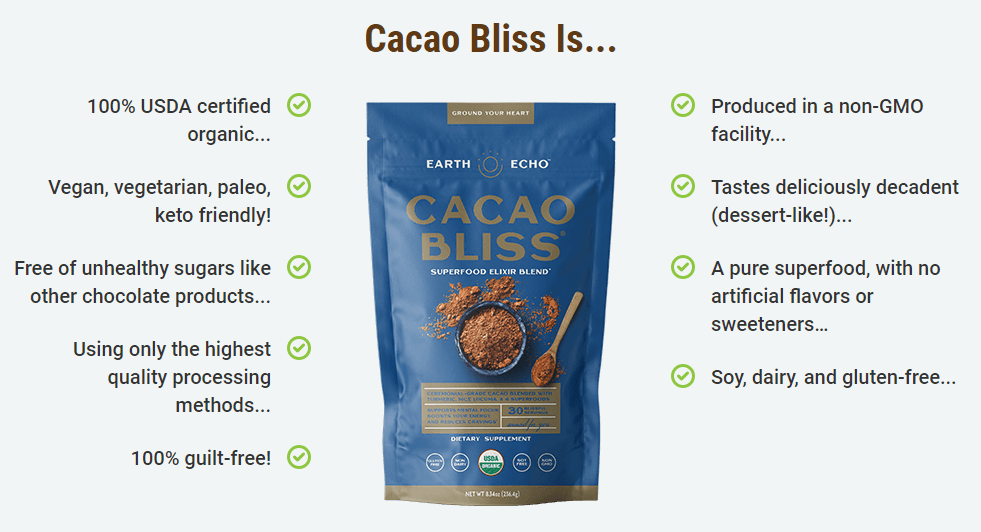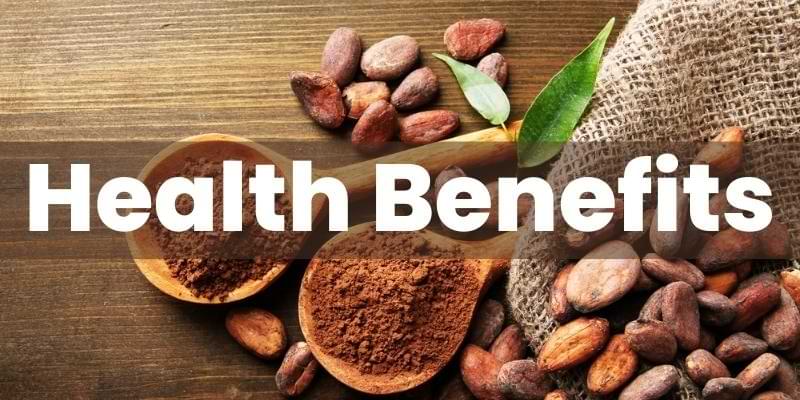Why You Should Indulge In This Delicious Superfood
Are you looking to indulge in a delicious treat while also reaping some health benefits? Cacao is the perfect choice! This decadent superfood has more than just great taste going for it. Let’s discuss the surprising health benefits of cacao, and how cacao can help improve your health, and why you should incorporate it into your diet today.
Cacao has been used as a food source for centuries by cultures around the world. It’s no wonder, then, that science has revealed many interesting health benefits associated with this tasty treat. From heart protection to improved brain function – incorporating cacao into your diet could be one of the best decisions you make for yourself this year!
Do you want to take control of your health and wellbeing while enjoying something delicious?
Look no further: adding even small amounts of cacao into your everyday meals will provide an array of health benefits that may surprise you. Read on to discover all the wonderful things that cacao can do for your body and mind – and learn how to get started incorporating it into your life right away!
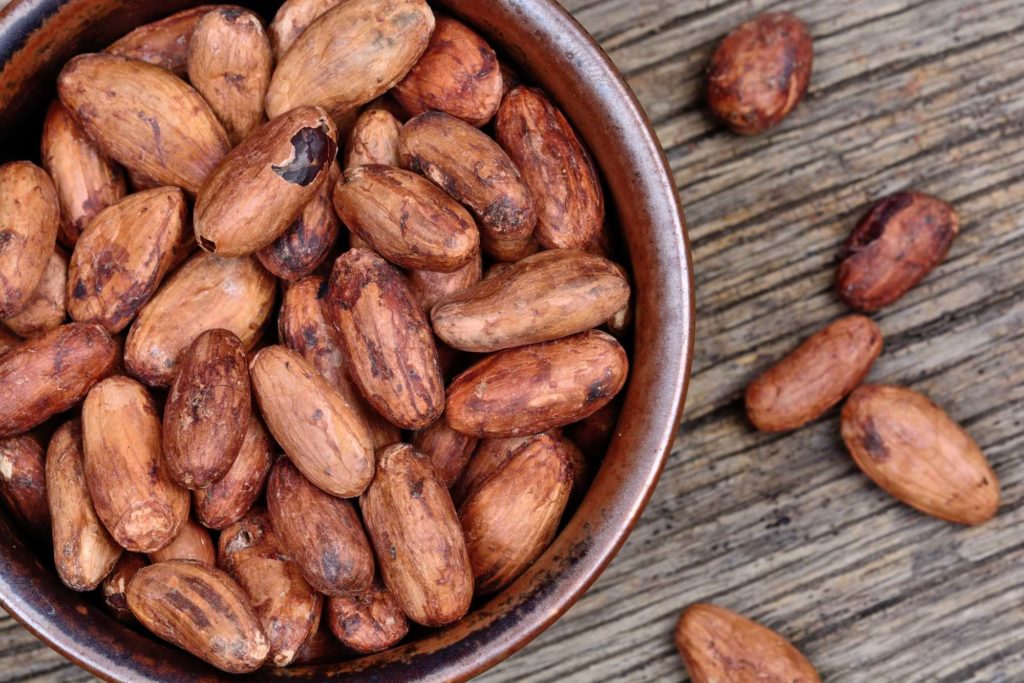
Table of Contents
What Is Cacao?
Have you heard the theory that indulging in chocolate can be a healthy habit? Well, this could very well be true if what you are consuming is cacao.
Cacao is derived from the beans of Theobroma cacao tree and it’s far more than just an ingredient for delicious desserts. Commonly known as cocoa butter, cacao comes from grinding up dried and fermented cacao beans into nibs or powder form.
It contains powerful antioxidants, minerals, vitamins and essential fatty acids which provide numerous health benefits. Its rich flavour makes it highly sought after by many foodies around the world – not only for its nutritional value but also for its unique taste!
From smoothie bowls to protein bars, cacao has become a popular superfood among food enthusiasts who love experimenting with their meals. So why should we indulge in this delicious superfood? Let’s take a look at its history and origins to understand how it came about.
History And Origin Of Cacao
Cacao has a long and fascinating history that starts in the tropical rainforests of Central America. The Mayans were some of the first to cultivate cacao, as far back as 400 BCE, when they domesticated it from its wild relatives. They would eat the beans whole or use them for making beverages like chocolate drinks and even religious rituals.
The Aztecs developed their own cultivation methods which led to an increase in production and trading of cacao products such as cocoa powder and other goods made with the plant’s pods. This eventually led to Europe’s discovery of cacao, bringing about a revolution in food culture. It was during this time that we saw chocolate become popularized around the world.
In modern times, cacao is still one of the most important crops on earth; it provides jobs for millions of people worldwide who are involved in its production and trade. As more research into its benefits is conducted, there seems to be no limit to what this superfood can do! From boosting energy levels to providing essential nutrients that our bodies need, it truly is a miracle crop that deserves all the attention it gets today.
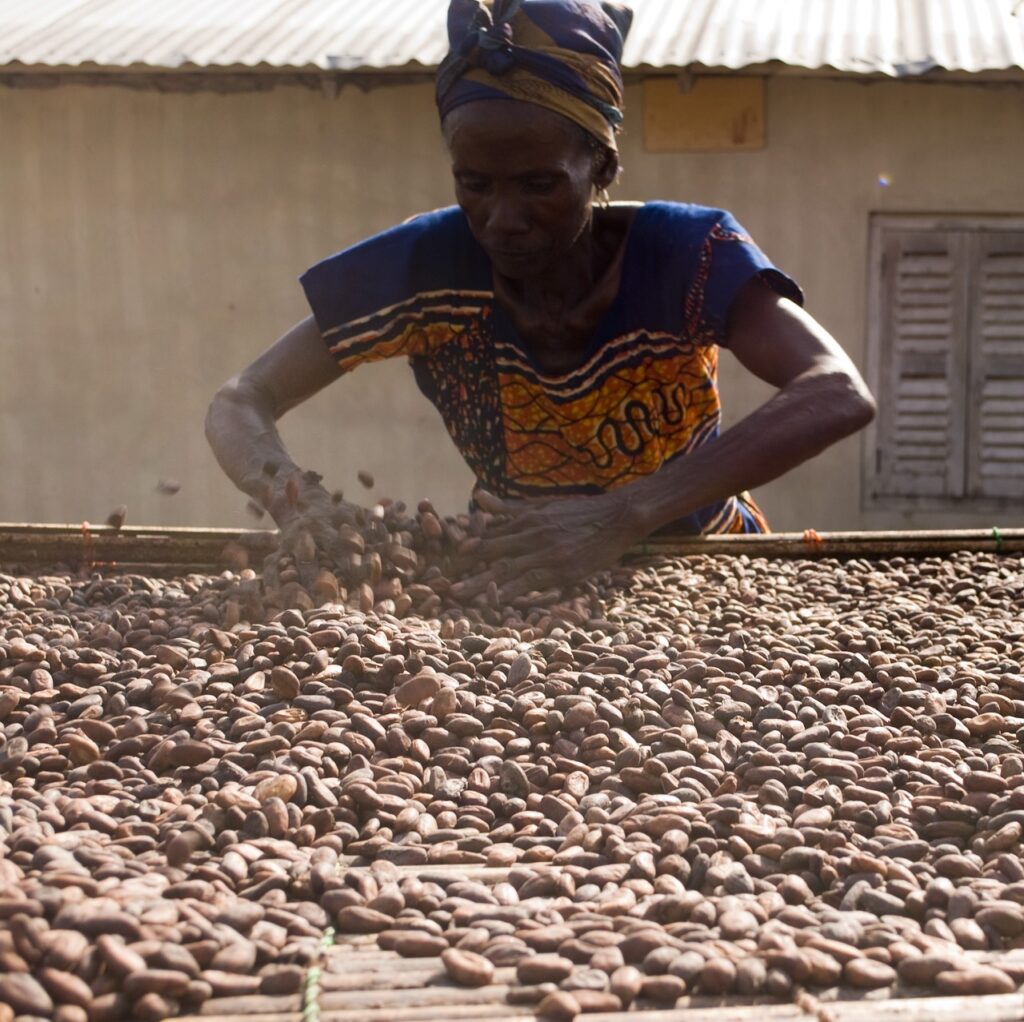
Cultivation, Harvesting And Processing Of Cacao
Cacao production is a complex process that requires the utmost care and attention. It starts with farming, then harvesting, fermenting and finally processing cacao into chocolate. Farmers must tend to their crops for up to five years before harvest can begin. Here are some of the steps involved in getting delicious cocoa from tree to bar:
- Farming: Cacao farmers use traditional methods such as shade grown trees and natural fertilizer to ensure quality products. They also need to be aware of possible threats posed by pests or disease; proper management practices can help mitigate these risks.
- Harvesting: Harvest time begins when the pods are ripe and ready for picking after about 5 months on the tree. The pod needs to be cut open and all beans removed carefully so they don’t get damaged during the process. This means that only experienced harvesters should do this job!
- Fermentation: After being harvested, the beans need to undergo a fermentation process which helps bring out more flavor notes than would otherwise be present in raw cacao beans. During this stage, yeasts found naturally on the surface of each bean will break down proteins and fats while releasing volatile compounds that give rise to unique flavors like caramel, orange blossom or even tobacco depending on where it’s sourced from.
- Processing: Once fermented, dried and roasted, the beans are ground into what we know as cocoa powder or melted into liquid form known as cocoa butter – two key ingredients used for producing various types of chocolates. Cocoa powder is also often mixed with sugar, milk solids (for dairy free versions) and other additives such as vanilla extract before being molded into bars or chips which gives us a wide range of delicious treats made from one humble source – pure cacao!
From farm to table, there’s no denying that making good quality chocolate involves an intricate process requiring skillful workmanship at every step along the way. Now let’s move onto exploring the different types of chocolate derived from cacao that have become beloved worldwide!
Types Of Chocolate Derived From Cacao
Chocolate is derived from cacao, and there are many different types of chocolate that offer a variety of taste sensations for both connoisseurs and newbies alike. Each type of chocolate has its own unique flavor profile, coming from the same source but differing in how it’s processed.
| Type | Flavor Profile | Percentage Cacao |
|---|---|---|
| Dark Chocolate | Bold and Bitter | 70-85% |
| Milk Chocolate | Creamy and Sweet | 40-60% |
| White Chocolate | Mildly Fruity and Sweet | 0-20% |
Dark chocolate offers a bold and slightly bitter taste, with higher levels of cacao ranging between 70-85%. It pairs well with fruit or dessert wines like Moscato or Port. Milk chocolate has a creamy sweetness to it, usually having less than 60 percent cocoa solids. Its milder flavor makes it an ideal accompaniment to coffee drinks such as lattes and cappuccinos. Finally, white chocolate is made without any cocoa powder whatsoever which gives it a mildly fruity yet sweet taste; this one generally ranges between 0 – 20 percent cacao content.
No matter your preference, all types of chocolates derived from cacao provide delightful indulgences while packing some nutritional benefits too! Let’s explore these health benefits next.
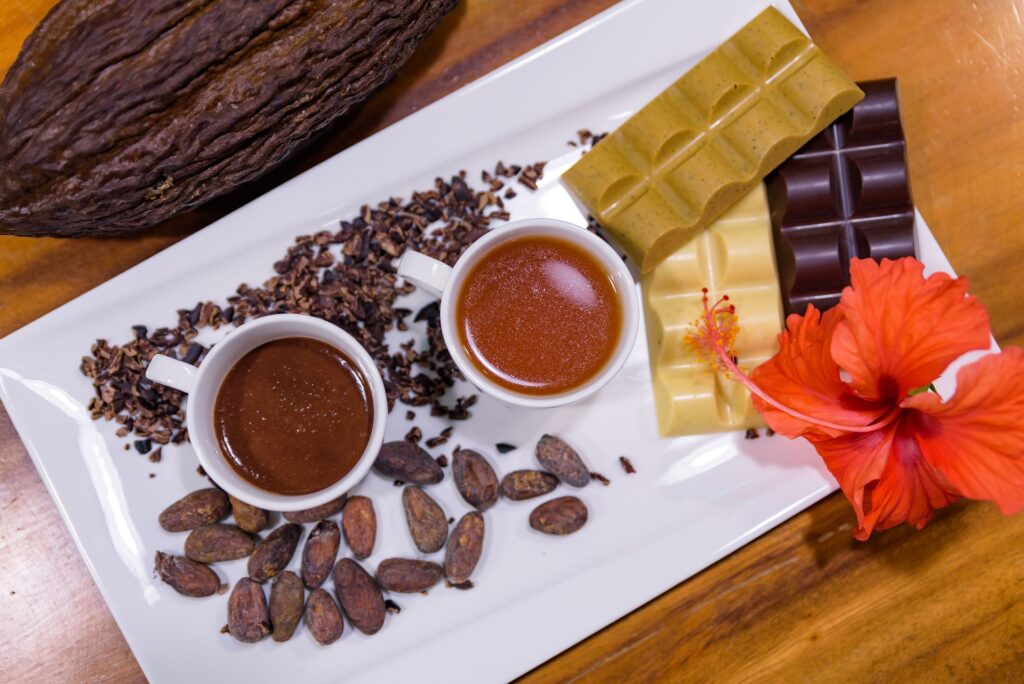
Health Benefits Of Cacao
Have you heard the theory that cacao is a health-promoting superfood? Well, it’s true! From cocoa powder to raw cacao and even cacao butter, this delectable treat can offer up some serious benefits. Here are just a few of them:
- Improved Mood: Cacao contains anandamide – also known as the ‘bliss molecule’ – which helps regulate moods and has been found to improve overall well-being. It also contains tryptophan, which helps produce serotonin in the brain, ultimately leading to improved moods.
- Heart Health: Studies have shown that consuming dark chocolate made with at least 70% cacao content may reduce your risk for heart disease. Additionally, regular consumption of cocoa or cacao products has been linked to lower blood pressure by reducing inflammation within the body.
- Brain Function & Focus: The flavonoids present in both cocoa powder and cacao beans have been linked to improved cognitive function including memory and focus. These same compounds help protect neurons from oxidative damage resulting in better longterm performance on tasks like problem solving and mental agility tests.
Cacao truly is a powerhouse food when it comes to health benefits! Now let’s take a look at how antioxidants contained within these delicious treats can benefit us further.
Antioxidants In Cacao
Antioxidants are essential for a healthy lifestyle, and cacao is full of them. The cacao tree produces antioxidants in abundance thanks to its unique fermentation process. During this process, the beans undergo their own natural genetics which helps to enhance the antioxidant content within each bean. This means that you can get a huge dose of those important free radicals while still enjoying some delicious chocolate!
The main type of antioxidants found in cacao are flavonoids, polyphenols, and alkaloids. These powerful compounds help protect our cells from oxidative damage caused by environmental factors such as pollution, UV light exposure and smoking. Moreover, research has shown that cocoa-derived antioxidants may also possess anti-inflammatory properties which could be beneficial for reducing chronic inflammation associated with certain diseases like heart disease or diabetes.
In addition to these potent health benefits, it’s worth noting that dark chocolates made from unprocessed raw cocoa tend to contain higher levels of antioxidants than other types of chocolates due to minimal processing and added sugar content. So if you’re looking for an indulgence that won’t compromise your long-term health goals then opt for a high-quality dark chocolate bar instead! With all these amazing benefits packed into one single food item, it’s no wonder why cacao is considered one of nature’s true superfoods.
So now that we’ve discovered the power of antioxidants in cacao let’s take a look at what nutritional value they offer us when consuming this deliciously decadent treat.
Nutritional Content Of Cacao
It’s practically impossible to deny the deliciousness of cacao. From a chocolate factory full of sweet treats to a single bite of dark chocolate, people around the world can’t seem to get enough. But what makes this magical bean so special? The answer lies in its nutritional content!
Cacao is a powerhouse of antioxidants and minerals that have been proven time and time again to be beneficial for our health. Let’s take a look at some key components:
| Item | Amount | Benefits |
|---|---|---|
| Magnesium | 170mg/100g | Improved muscle functioning, reduced stress levels, better sleep quality |
| Iron | 11.9 mg/100g | Boosts energy levels, increases red blood cell production and hemoglobin count |
| Copper | 0.6 mg/100g | Helps with collagen synthesis and wound healing |
| Zinc | 3.3 mg/100g | Improves immunity and supports healthy skin |
Amazingly enough, these are just four out of hundreds of nutrients found in theobroma cacao beans – making them one of nature’s most incredible superfoods! Not only does it provide an array of vitamins, but it also helps to boost energy levels and support cognitive functions like memory retention and learning capabilities. Plus, cacao products are low in calories yet rich in minerals and antioxidants which make them an ideal snack for those wanting to maintain their weight or follow a healthier lifestyle.
The nutrition packed into each little grain from the majestic cacao tree is truly remarkable and should not go unnoticed! With its high concentration of vital elements such as iron, zinc, copper and magnesium combined with its multitude of antioxidant properties; it’s no wonder why more and more people are turning towards this amazing product for improved health benefits every day.
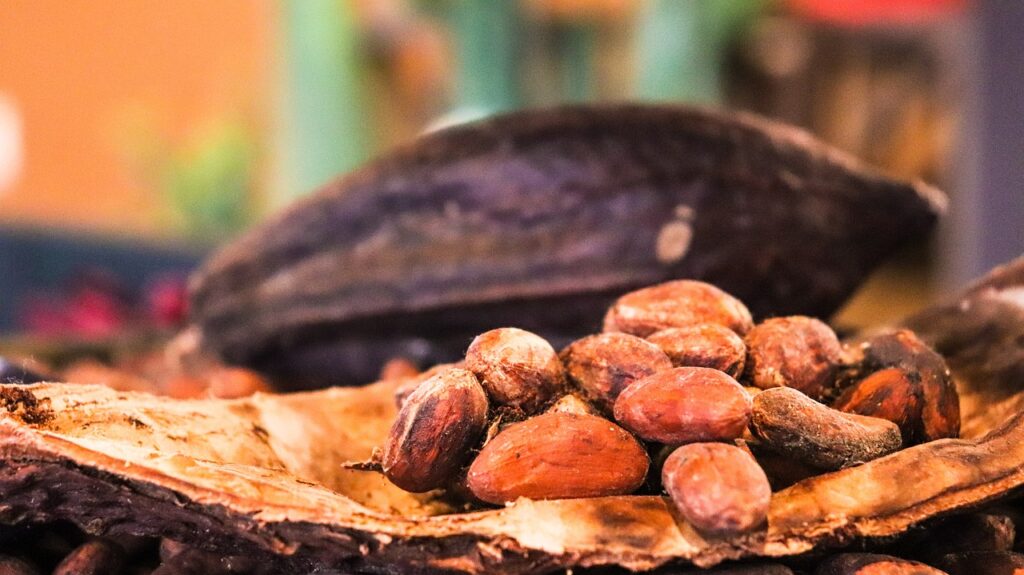
Heart Health Benefits Of Dark Chocolate
When it comes to the health benefits of cacao, many people think about chocolate. Although dark chocolate only consists of around 30 percent cocoa solids (the other 70 percent is sugar and fat), these cocoa solids are what gives dark chocolate its nutritional punch. Chocolate liquor, which is made from crushing cocoa beans, is rich in flavonoids that have been shown to help reduce inflammation and improve heart health.
Cacao production has likely been happening since ancient civilizations first discovered this powerful superfood. In modern times, Dutch processed cocoa or alkalized cocoa powder goes through an additional step where it’s treated with a base like potassium carbonate before being ground into a fine powder. This process reduces acidity levels while increasing the antioxidant content as well as making it more soluble in liquids so it can be used for baking recipes.
The numerous studies conducted on the effects of dark chocolate consumption make one thing clear: dark chocolate can positively impact our heart health. A recent meta-analysis found that those who ate moderate amounts of dark chocolate over extended periods had lower rates of cardiovascular disease than those who didn’t consume any at all.
The beneficial compounds in dark chocolate may also act as antioxidants that protect against oxidative stress and even reduce blood pressure levels when consumed regularly over time. Moving forward, we’ll discuss how frequent consumption of dark chocolate can lead to reductions in blood pressure levels.
Blood Pressure Reduction With Chocolate Consumption
Cacao is a powerful superfood that can not only tantalize your taste buds, but also offer surprising health benefits. Recent studies have found that enjoying some dark chocolate could be beneficial to reducing blood pressure levels.
When cacao beans are turned into bars of delicious single-origin or bean-to-bar chocolates, the intensity and quality of its antioxidants increase as it goes through the roasting process. This type of chocolate has been linked to lower systolic and diastolic readings in individuals with high blood pressure.
It’s important to note that while consuming small amounts of dark chocolate may bring down overall BP numbers, there needs to be more research done on what kind of quantities should be consumed for maximum benefit. Additionally, many store bought products labeled “dark” still contain added sugars and unhealthy additives so it’s best to look for companies who specialize in making healthier versions using sustainable practices like organic farming and non-GMO ingredients.
Consuming dark chocolate made from ethically sourced cacao beans is an effective way to both satisfy your sweet tooth cravings while helping reduce potential risks associated with hypertension. So indulge responsibly and let your body thank you later! It turns out eating this delightful treat isn’t just enjoyable but can actually do wonders for improving brain health too.
Brain Health Improvement Via Cacao Intake
Indulging in cacao-based treats is not just a decadent way to satisfy your sweet tooth; it’s also an incredibly effective method of improving brain health.
From the start, right at the source on the cacao plantation, chocolate manufacturing utilizes powerful antioxidants that can improve cognitive function and reduce inflammation. And if you think that sounds too good to be true – don’t worry, because we are talking about scientifically backed research here!
When consumed as part of a balanced diet, studies show that eating chocolate helps support mental clarity and focus. The polyphenols found in cocoa beans supports healthy blood flow to the brain, leading to improved concentration and better overall performance. Additionally, these polyphenol compounds help protect against age related decline in memory function by reducing oxidative stress damage and improving communication between neurons.
In short, adding dark chocolate – which contains higher levels of flavonoids than milk or white varieties – into your routine offers numerous benefits for both physical and mental wellbeing. Not only does it provide delicious taste satisfaction but it can also boost brain power with its high levels of antioxidant compounds from the cacao bean itself. Ready to take control of your own wellbeing? Then why not try out some organic dark chocolate today!
Metabolic Benefits Of Eating Chocolate
When it comes to metabolic benefits, chocolate is a powerhouse of nutrition. It’s no secret that cacao contains essential vitamins and minerals like magnesium, iron, and calcium which help keep our bodies functioning at their best. But there are additional positive effects from eating this delicious superfood.
Not only does fair trade cocoa provide an ethical source for the bean itself, but terroir-specific beans can also deliver unique flavors when used in chocolate confectionery. This means that you’ll get different tastes depending on where the beans were grown – making every bite a nutrient filled adventure!
The antioxidants found in dark chocolate have been shown to reduce inflammation throughout the body and improve heart health. Studies suggest that consuming dark chocolate with 70% or higher cocoa content may even lower blood pressure levels significantly over time. Furthermore, some studies show that eating small amounts of high quality dark chocolates can aid in weight loss due to its ability to suppress appetite while providing satisfying flavor.
But one of the most impressive findings regarding dark chocolate has to do with its impact on blood sugar levels: since it’s low on the glycemic index scale and rich in healthy fats and dietary fibers, research shows that regular consumption helps stabilize glucose levels naturally. This makes it easier for those who suffer from diabetes to enjoy a treat without worrying about spiking their insulin too much.
By combining all these remarkable metabolic benefits together, we can see why indulging in responsibly sourced cacao products is such an attractive option for anyone looking to maintain optimal health as well as great taste!
Impact On Blood Sugar Levels
In this day and age, the thought of a sugary snack leading to anything other than weight gain seems almost inconceivable. But when it comes to chocolate, that’s exactly what we find! Cacao is one of nature’s greatest gifts – with its ability to support healthy blood sugar levels. It has been enjoyed by humans for centuries, with evidence tracing back some 4,000 years ago in Central America. The chocolate industry may want us to believe otherwise but don’t be fooled: indulging in cacao-rich chocolates can help keep your waistline trim.
The key lies in understanding how cacao affects our bodies differently from refined sugars found in processed treats like candy bars or cake frosting. Research suggests that these natural compounds interact with specific enzymes involved in regulating glucose uptake within our cells – thus allowing more stable energy levels throughout the day (1). This means you can enjoy chocolates without worrying about spiking your insulin levels – as long as they are made with quality ingredients and not coated with unhealthy additives such as artificial sweeteners or excessive amounts of saturated fats.
This should come as no surprise; after all, cocoa beans have been revered around the world since ancient times for their powerful health benefits. So if you’re looking for ways to satisfy your sweet tooth while still keeping an eye on your waistline – look no further than real dark chocolate! Its rich flavor and texture make it a delicious treat that will surely tantalize your taste buds while helping maintain balanced glucose levels…and who doesn’t want that?
Weight Loss Support From Indulging In Chocolates
Chocolate is often associated with indulgence and decadence, but it can also be part of a healthy lifestyle. Research suggests that cacao, the main ingredient in chocolate, contains properties that may help you shed some pounds. Cacao is packed full of fiber, which acts as an appetite suppressant and helps to keep your metabolism high. Additionally, dark chocolates contain polyphenols which have been shown to reduce cravings for sweet foods such as desserts. Furthermore, studies suggest that these compounds are beneficial for regulating blood sugar levels which could help prevent weight gain over time.
So how do you make sure you’re getting the most out of this delicious superfood? Start by choosing organic and fair-trade varieties whenever possible. These types of chocolates tend to have less added sugars and higher concentrations of antioxidants. You don’t need to limit yourself to bars either; there are many creative ways to enjoy cocoa while still reaping its health benefits! From homemade hot chocolate recipes to epic chocolate sculptures – the possibilities are endless when it comes to incorporating cacao into your diet in a mindful way.
As if all this wasn’t enough reason already to indulge in some chocolaty goodness now and then, evidence shows that regular consumption of small amounts (a few squares or pieces) can actually contribute towards healthier eating habits overall! So dig in without guilt – just remember not every day should be devoted solely to satisfying those chocolate cravings! The next section examines the impact cacao has on mental health and well-being…
Impact On Mental Health And Well-Being
Moving on from the weight loss benefits of indulging in chocolates, let’s look at the impact that cacao has on our mental health and well-being. It turns out, there are quite a few reasons why you should include this delicious superfood into your diet!
For starters, cacao contains phenethylamine, which is an organic compound found to activate the brain’s pleasure receptors. This boosts mood and increases levels of serotonin – the hormone responsible for happiness. In addition, consuming dark chocolate releases endorphins in the body; these are natural chemicals that make us feel good by increasing feelings of joy and contentment. And as if that weren’t enough, research suggests that eating dark chocolate can also reduce stress hormones such as cortisol and epinephrine!
Cacao is also rich in antioxidants like flavonoids and polyphenols. These compounds help protect cells against oxidative damage caused by free radicals – molecules linked to age-related diseases like heart disease, cancer and Alzheimer’s. Plus, studies suggest that consuming cocoa products may even improve cognitive function, memory and concentration!
No wonder it’s so hard to resist those tempting treats loaded with chocolate goodness; they really do offer some amazing health benefits! Now let’s explore how we can get the most out of this delectable superfood by looking into fair trade, bean to bar and organic chocolates.
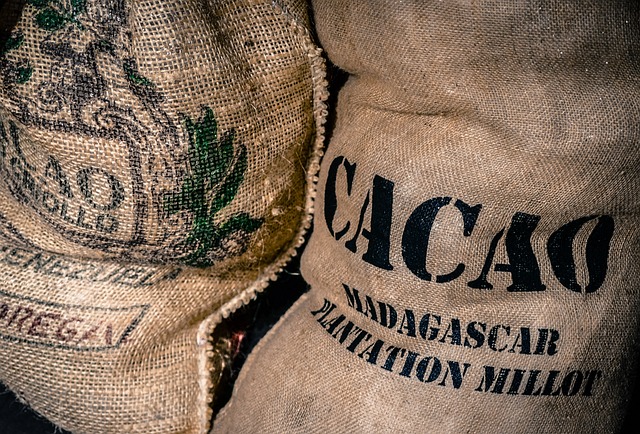
Fair Trade, Bean To Bar And Organic Chocolates
When it comes to cacao, not all chocolates are created equal. It’s important to pay attention to how the chocolate was made and sourced. Fair Trade-certified, Bean to Bar and Organic Chocolates come with many benefits that regular processed chocolates don’t offer. According to studies, 42% of consumers want more information about where their food comes from and what goes into it.
Fair Trade certification ensures that farmers receive fair wages for their labor and have access to safe working conditions. Companies who use Fair Trade beans often invest in improving the quality of life for farmers by providing them with additional healthcare coverage or educational opportunities for their children. By choosing a Fair Trade certified product, you can be assured that your purchase is helping support ethical farming practices around the world.
Bean-to-Bar Chocolate means that the chocolate was made completely in-house; starting with raw cocoa beans which were roasted, ground down into a paste (called “liquor”), mixed with sugar, then poured into molds and cooled until solidified. This type of production has become popular over the past few years because it gives manufacturers complete control over every step of making the chocolate – ensuring only top quality ingredients are used while still keeping costs low enough so customers can afford them. The end result? A delicious bar of pure goodness!
Organic chocolate contains no artificial flavors or preservatives; instead relying on natural sweeteners like honey or agave nectar as well as organic whole milk powder or coconut oil for richness and flavor. Plus, when compared to conventional products, organically grown cacao boasts higher levels of antioxidants – meaning an even bigger health boost! All these factors combined make this indulgent treat guilt free! So go ahead, give yourself permission to enjoy some lusciously dark organic chocolate today – your body will thank you later!
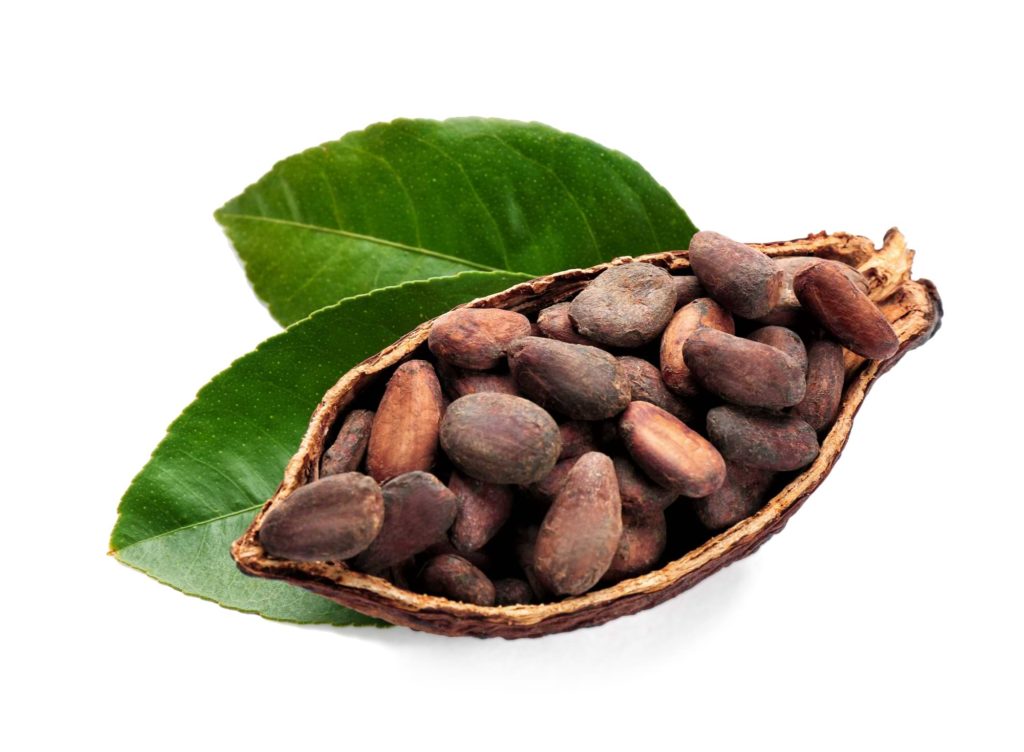
Frequently Asked Questions
What Is The Difference Between Cocoa And Cacao?
Have you ever wondered what the difference is between cocoa and cacao? Many people use these terms interchangeably, but they are actually quite distinct. Cocoa and cacao both come from the same source – Theobroma cacao, a tropical tree native to Central America – but have some important differences in their production process that affects their flavor profile and nutritional value. In this article, we’ll explore the differences between cocoa and cacao so you can make an educated decision about which one is right for you!
Cacao beans are harvested directly from its trees while cocoa beans undergo a more involved process of fermentation, roasting, and grinding before being packaged. This changes not only the taste but also nutrition profile; due to higher levels of antioxidants found in raw cacao than roasted cocoa, it’s often seen as having better health benefits. Cacao generally has a bittersweet flavor with subtle fruity notes, whereas cocoa tends to be sweeter with a more intense chocolate flavor.
When choosing your favorite treat or baking ingredient, it’s important to know what makes them different. If you’re looking for something that’s packed full of nutrients like magnesium and flavonoids while providing antioxidant properties then look no further than cacao! On the other hand if you prefer something slightly sweetened with less bitterness then opt for cocoa instead. Both options offer deliciousness without sacrificing taste or nutrition – so why not try both?
How Much Cacao Should I Consume Each Day?
It’s no surprise that cacao is one of the most popular indulgences. But what many may not know is that this delicious superfood has a host of health benefits. So, how much should you be consuming each day?
Take for example John, who recently decided to incorporate more cacao into his diet after researching its potential health benefits. He wanted to ensure he was getting enough of this powerful food without overdoing it and causing any adverse side effects.
The recommended daily dosage of raw or powdered cacao depends on your age, weight, and overall health. Generally speaking, adults should aim for between 20-50 grams per day while children could start with 5-10 grams depending on their size and activity level. It’s important to note though that too much can lead to headaches and stomach upset so it’s best to monitor your dose and adjust accordingly until you find something that works best for you.
Cacao is an incredibly versatile ingredient so finding ways to include it in meals isn’t difficult either – from smoothies to breakfast bowls and even desserts like brownies! With all these options available there are plenty of opportunities to reap the full range of benefits from this amazing superfood without having to worry about going overboard.
What Is The Best Way To Incorporate Cacao Into My Diet?
Are you looking for the best way to incorporate cacao into your diet? Cacao is a powerful superfood that packs an array of health benefits – so it’s worth finding out how it can be added to your day-to-day eating routine.
First, let’s look at what makes up cacao. It contains magnesium and iron as well as vitamins A, B1, C, E and K. It also has over 300 compounds which are beneficial for our bodies including polyphenols, flavonoids and alkaloids. These elements make cacao one of nature’s most nutrient-dense foods!
So how much should you consume each day? This depends on factors such as age and weight but generally, 2 teaspoons per day is enough to get all the nutritional goodness from this delicious treat without any adverse effects. Additionally, there are several ways in which you can enjoy cacao – whether it be through smoothies or baking recipes with raw cocoa powder or nibs. You could even use dark chocolate with high levels of cocoa solids (70% or higher). Ultimately though, the choice is yours; whatever method works best for you is fine too!
It’s important to remember that while adding cacao to your diet has many advantages, moderation is key. Too much consumption may result in unwanted side effects like caffeine overload and digestive issues. So don’t forget: keep your intake moderate but consistent and reap all of its amazing benefits!
Are There Any Potential Risks Associated With Consuming Cacao?
Have you ever stopped to consider the potential risks associated with consuming cacao? While it is true that this delicious superfood can bring many health benefits, it’s important to be aware of how much we should consume and if there are any harms associated. Let’s take a closer look at what could happen when overindulging in cacao:
- Too much caffeine intake: Cacao contains high levels of caffeine which can cause irritability, restlessness and difficulty sleeping.
- Risk of weight gain: As with all treats, too much indulgence may lead to an increase on the scales.
- Overstimulation of the nervous system: One study found that some people experienced jittery feelings after ingesting large amounts of cocoa powder.
- Upset stomach or diarrhea: Eating too much chocolate can result in digestive issues such as bloating, nausea and abdominal pain.
- Allergies and sensitivities: Some individuals have shown allergic reactions to components present in cacao including dairy proteins and gluten.
Fortunately, these negative effects can easily be avoided by moderating your consumption level and paying attention to nutrient composition labels. But how exactly do you incorporate cacao into your diet without going overboard? The best way would be to opt for dark chocolate bars containing 70% or higher percentage of cocoa solids – this ensures that you get enough antioxidants while still avoiding sugar spikes from added ingredients like milk and sugar syrup. Additionally, adding raw cacao nibs or powder to smoothies and yogurt can provide extra nutrients without having a strong taste.
It’s clear then, that responsibly incorporating cacao into one’s diet has its rewards; increased energy levels coupled with improved cognitive function thanks to its flavonoids content make for a winning combination! Just remember not to go overboard – moderation is key!
Is There A Recommended Storage Method For Cacao?
When it comes to storing cacao, there are a few things you should know. The most important factor is keeping the product away from heat and moisture. In addition, as with any food item, proper storage will keep your cacao fresher longer and help preserve its nutritional content. Here are some tips for how to store cacao: * Keep it in an airtight container at room temperature * Store away from direct sunlight or other sources of heat * Place your container in a cool, dry area such as a pantry or cupboard
It’s also worth noting that when purchasing cacao products like cocoa powder and dark chocolate bars, make sure they have not been exposed to high temperatures during transport or while sitting on store shelves. Heat can degrade the quality of the ingredients and reduce their health benefits. To ensure freshness, opt for brands that clearly state on the label where and how their cacao was sourced and stored.
Making sure you practice proper storage techniques can save time and money by helping extend the shelf life of your favorite treats without sacrificing nutrition! Taking just a few extra minutes to store your cacoa correctly can go a long way towards ensuring that it stays delicious and nutritious over time.
Conclusion
In conclusion, cacao is a delicious superfood that can be enjoyed in various forms and offers many health benefits. It’s important to understand the differences between cocoa and cacao so that you can make an informed decision when deciding how much to consume each day. Incorporating this tasty treat into your diet by adding it to smoothies, baking with it, or simply enjoying some raw cacao nibs can help boost overall health.
The potential risks associated with consuming too much cacao are minor compared to the positive effects on our bodies; however, moderation is key. When storing this powerful ingredient, keep it away from heat and direct sunlight for optimal freshness. Finally, remember that indulging in some chocolatey goodness doesn’t have to be seen as an unhealthy habit – instead, think of it as a way of taking care of yourself!

